Hoangthanhtruc283
On this page, you find all documents, package deals, and flashcards offered by seller hoangthanhtruc283.
- 17
- 0
- 1
Community
- Followers
- Following
18 items
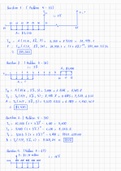
HW5_Deferred Annuities and More Complicated Equivalence Calculations_EE
A deferred annuity is an annuity that does not begin making payments until a specified date in the future. In engineering economy, deferred annuities are often used to evaluate investments in which cash inflows or outflows are expected to occur at a future date. Engineers use present worth, future worth, annual worth, and nominal rate factors to calculate the value of deferred annuities and compare them to other investment options. In more complicated equivalence calculations, engineers may u...
- Book & Paket-Deal
- Other
- • 2 pages •
A deferred annuity is an annuity that does not begin making payments until a specified date in the future. In engineering economy, deferred annuities are often used to evaluate investments in which cash inflows or outflows are expected to occur at a future date. Engineers use present worth, future worth, annual worth, and nominal rate factors to calculate the value of deferred annuities and compare them to other investment options. In more complicated equivalence calculations, engineers may u...
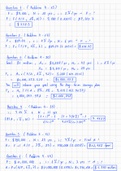
HW4_Equivalence Calculations_P,F,A,N_EngEconomics
Equivalence calculations using the four factors - present worth (P), future worth (F), annual worth (A), and nominal rate (N) - are commonly used to compare and evaluate alternative investment options. Present worth (P) is the value today of a series of future cash flows, calculated by discounting them using a given interest rate. Future worth (F) is the value at a future time of a series of present cash flows, calculated by compounding them using a given interest rate. Annual worth (A) is th...
- Book & Paket-Deal
- Other
- • 2 pages •
Equivalence calculations using the four factors - present worth (P), future worth (F), annual worth (A), and nominal rate (N) - are commonly used to compare and evaluate alternative investment options. Present worth (P) is the value today of a series of future cash flows, calculated by discounting them using a given interest rate. Future worth (F) is the value at a future time of a series of present cash flows, calculated by compounding them using a given interest rate. Annual worth (A) is th...
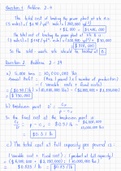
HW3_Cost Concepts and Design Economics_EngEconomics
Cost concepts refer to the various types of costs that are involved in a project, including direct costs (such as labor and materials) and indirect costs (such as overhead and administration expenses). These costs are analyzed and quantified in order to determine the total cost of a project. Understanding cost concepts is important for engineers because it allows them to accurately estimate the costs associated with a project and identify areas where cost savings can be made. Design economics...
- Book & Paket-Deal
- Other
- • 3 pages •
Cost concepts refer to the various types of costs that are involved in a project, including direct costs (such as labor and materials) and indirect costs (such as overhead and administration expenses). These costs are analyzed and quantified in order to determine the total cost of a project. Understanding cost concepts is important for engineers because it allows them to accurately estimate the costs associated with a project and identify areas where cost savings can be made. Design economics...

HW8_IRR (Internal Rate of Return) and Payback Period_EngEconomics
IRR (Internal Rate of Return) and Payback Period are two common methods used to evaluate the financial viability of a project. IRR is a financial metric used to determine the rate at which the net present value (NPV) of a project equals zero. It represents the discount rate at which the present value of the expected cash inflows equals the present value of the expected cash outflows. A project is considered financially viable if its IRR is greater than the required rate of return. In other wo...
- Book
- Other
- • 2 pages •
IRR (Internal Rate of Return) and Payback Period are two common methods used to evaluate the financial viability of a project. IRR is a financial metric used to determine the rate at which the net present value (NPV) of a project equals zero. It represents the discount rate at which the present value of the expected cash inflows equals the present value of the expected cash outflows. A project is considered financially viable if its IRR is greater than the required rate of return. In other wo...
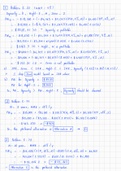
HW9_Multiple Alternatives_Engineering Economics
Multiple alternatives analysis is a decision-making tool used to compare and select the best alternative among several options. Multiple alternatives analysis involves evaluating different alternatives based on their costs, benefits, and risks.
- Book
- Other
- • 2 pages •
Multiple alternatives analysis is a decision-making tool used to compare and select the best alternative among several options. Multiple alternatives analysis involves evaluating different alternatives based on their costs, benefits, and risks.
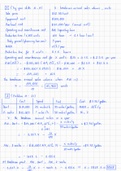
HW10_Break-even analysis
Break-even analysis is a tool used in engineering economy to determine the point at which total revenue equals total costs, resulting in neither a profit nor a loss. The break-even point is the level of production or sales at which the total revenue generated by a product or service equals the total cost of producing it.
- Book
- Other
- • 2 pages •
Break-even analysis is a tool used in engineering economy to determine the point at which total revenue equals total costs, resulting in neither a profit nor a loss. The break-even point is the level of production or sales at which the total revenue generated by a product or service equals the total cost of producing it.
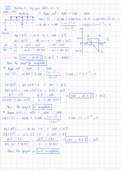
HW11_Sensitivity Analysis_Engineering Economics
Sensitivity analysis is an important tool in engineering economy that is used to determine how changes in input variables affect the output of an economic analysis. It involves varying one or more of the input variables in a model to determine the effect on the output.
- Book
- Other
- • 5 pages •
Sensitivity analysis is an important tool in engineering economy that is used to determine how changes in input variables affect the output of an economic analysis. It involves varying one or more of the input variables in a model to determine the effect on the output.
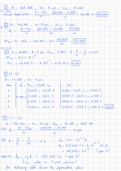
HW12 - Chapter 7: Depreciation and Income Taxes
It discusses the different methods of depreciation (such as straight-line, declining balance, and sum-of-the-years' digits), how to calculate depreciation expenses, and the impact of different depreciation methods on income taxes. The chapter also covers the basics of income taxes, including the different types of taxes and tax rates, tax deductions and credits, and how to calculate income tax expenses.
- Book
- Other
- • 3 pages •
It discusses the different methods of depreciation (such as straight-line, declining balance, and sum-of-the-years' digits), how to calculate depreciation expenses, and the impact of different depreciation methods on income taxes. The chapter also covers the basics of income taxes, including the different types of taxes and tax rates, tax deductions and credits, and how to calculate income tax expenses.
